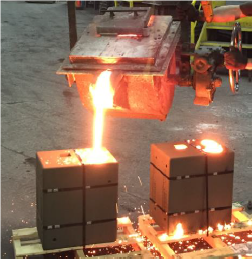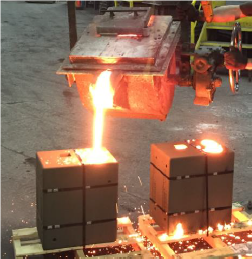NEWS & EVENTS
A Successful “First” Cast

The first technology project launched at LIFT is on its way to proving out that lightweighting can be successful – no matter the material.
 The project, led by American Axle and Michigan Technological University, to develop and deploy thin-wall ductile iron castings for high-volume production has developed and demonstrated a process which has taken 40 percent of the weight out of a cast iron part. In this case, the target component is a differential housing found in lightweight trucks.
The project, led by American Axle and Michigan Technological University, to develop and deploy thin-wall ductile iron castings for high-volume production has developed and demonstrated a process which has taken 40 percent of the weight out of a cast iron part. In this case, the target component is a differential housing found in lightweight trucks.
Currently, the new LIFT-designed and cast article is undergoing test and validation by both industry partners, American Axle and Eaton, to enable successful technology transition into production.
“When we started this project, I would have called a 20 or 25 percent weight reduction a success,” said Alan Taub, chief technology officer, LIFT. “So for the team to come up with 40 percent is amazing.”
To accomplish its goal, the team employed a systems engineering approach and considered both the design and functional requirements of the part. Using Integrated Computational Materials Engineering (ICME) tools, they were able to determine where weight could be removed from the part without compromising the housing’s strength or durability and quality.
In the end, the walls in some areas of the casting are more than 50 percent thinner than the original piece.
“Often times, castings are overdesigned to address the possibility of in-process produced anomalies that may be a detriment to the performance of the part,” said Larry Brown, executive director, LIFT. “This team was able to take a step back, look at the design, and see where improvements could be made without selecting a new material.”
In a parallel effort, the team also tweaked the iron alloy composition slightly which enhanced alloy flow characteristics into the mold, which enabled thinner walls.
After the LIFT-cast housing completes it testing and validation, the team will move on to phase II of the project which will investigate the weldability of a gear ring to the housing with minimal distortion of the newly thinned walls.